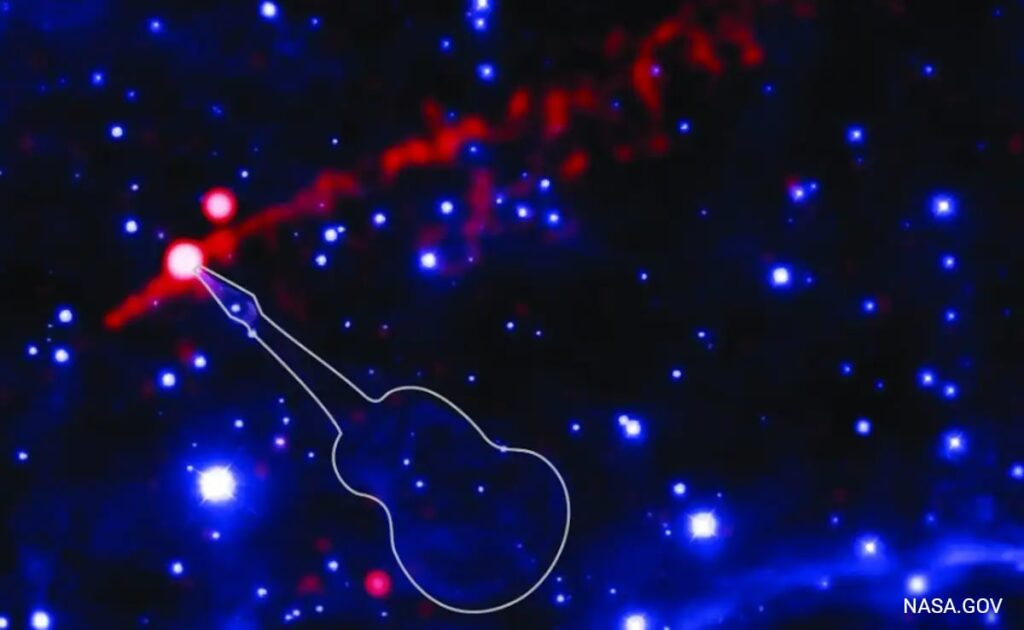Astronomers have discovered a surprising sight in space: a nebula that resembles a flaming guitar. This discovery was made possible through the joint efforts of NASA’s Chandra X-ray Observatory and the Hubble Space Telescope. Dubbed the Guitar Nebula, the nebula represents the cosmic artistry of a collapsing star, emitting streams of energy particles in a scene that resembles a flaming guitar playing a cosmic concert. I am.
A NASA video highlights Chandra’s role in capturing the filament of energetic particles at the top of the guitar-like structure. The caption reads, “Usually seen only in heavy metal bands or certain apocalyptic movies, a space-traveling ‘flame-throwing guitar’ has been discovered,” adding, “The X-rays from Chandra It shows filaments of matter and antimatter.” Particles about 2 light years or 12 trillion miles long are blasted out of the pulsar. ”
Watch the video here:
At the heart of this cosmic guitar is the Pulsar PSR B2224+65. Pulsars are highly magnetized rotating neutron stars that emit regular pulses of radiation, much like a lighthouse beacon. The dynamic energy of pulsars gives rise to the nebula’s impressive shape. “The shape of the guitar comes from bubbles blown by particles ejected by a constant wind from the pulsar. Since the pulsar is moving from the bottom right to the top left, most of the bubbles are caused by the pulsar moving through a medium of different density. “It was generated in the past when
This video highlights the movement of the pulsar and its filaments toward the top left of the frame, based on Chandra data collected in 2000, 2006, 2012, and 2021. Meanwhile, another video was created using observations from the Hubble Space Telescope spanning 1994 years. , 2001, 2006, 2021 — capturing the movement of the pulsar and smaller nearby features.
Data analysis reveals that the same fluctuations that create bubbles and guitar-like contours within the hydrogen nebula also influence the number of particles ejected to the right side of the pulsar. Ta. This activity causes the X-ray filament’s brightness to fluctuate slightly, resembling a cosmic torch extending from the tip of a guitar.
The formation of filaments reveals how electrons and positrons move through the interstellar medium. It also shows how these particles are introduced into the surrounding space.
This discovery is documented in a study published in The Astrophysical Journal.



